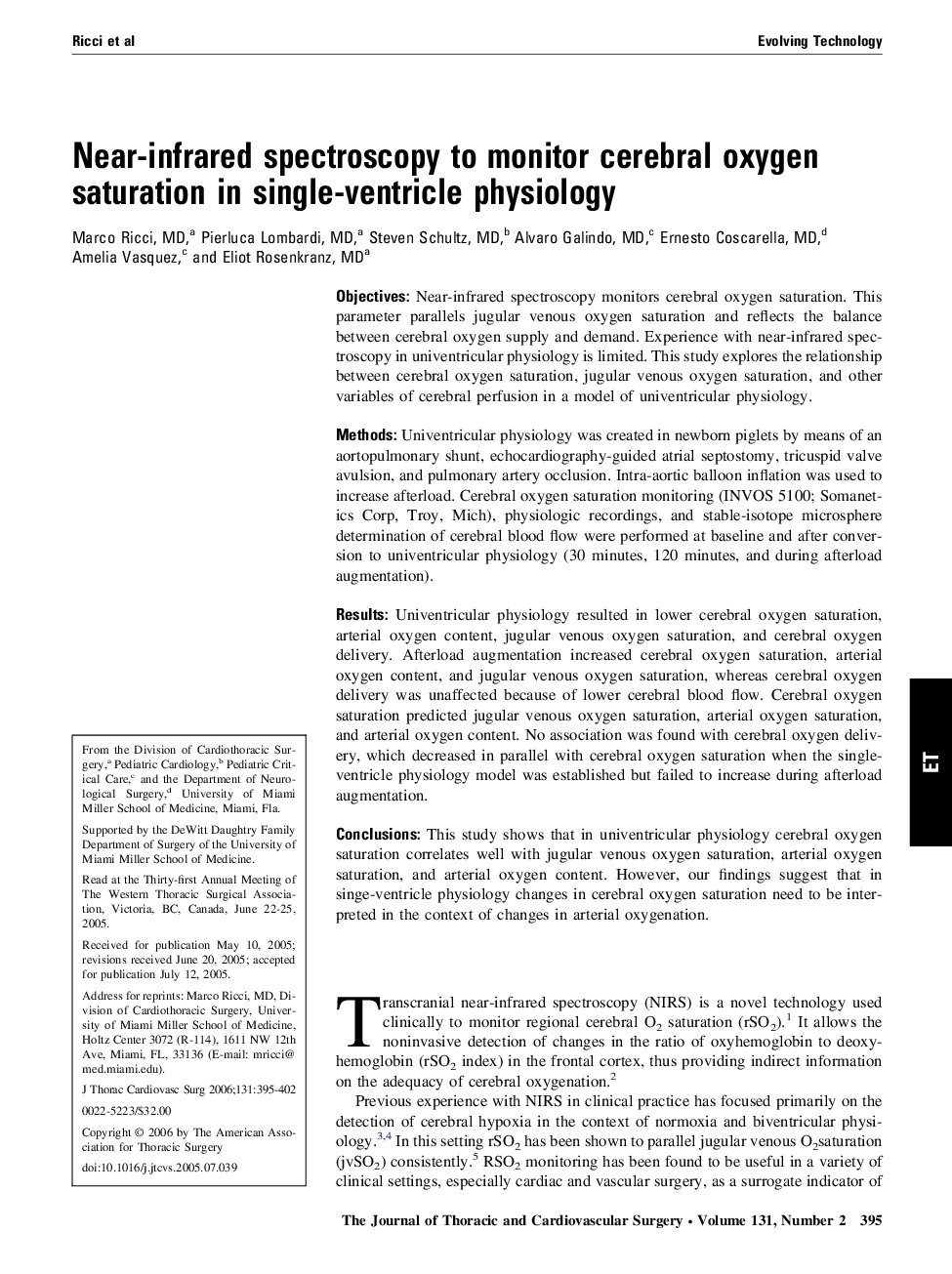| Article ID | Journal | Published Year | Pages | File Type |
|---|---|---|---|---|
| 2987286 | The Journal of Thoracic and Cardiovascular Surgery | 2006 | 8 Pages |
ObjectivesNear-infrared spectroscopy monitors cerebral oxygen saturation. This parameter parallels jugular venous oxygen saturation and reflects the balance between cerebral oxygen supply and demand. Experience with near-infrared spectroscopy in univentricular physiology is limited. This study explores the relationship between cerebral oxygen saturation, jugular venous oxygen saturation, and other variables of cerebral perfusion in a model of univentricular physiology.MethodsUniventricular physiology was created in newborn piglets by means of an aortopulmonary shunt, echocardiography-guided atrial septostomy, tricuspid valve avulsion, and pulmonary artery occlusion. Intra-aortic balloon inflation was used to increase afterload. Cerebral oxygen saturation monitoring (INVOS 5100; Somanetics Corp, Troy, Mich), physiologic recordings, and stable-isotope microsphere determination of cerebral blood flow were performed at baseline and after conversion to univentricular physiology (30 minutes, 120 minutes, and during afterload augmentation).ResultsUniventricular physiology resulted in lower cerebral oxygen saturation, arterial oxygen content, jugular venous oxygen saturation, and cerebral oxygen delivery. Afterload augmentation increased cerebral oxygen saturation, arterial oxygen content, and jugular venous oxygen saturation, whereas cerebral oxygen delivery was unaffected because of lower cerebral blood flow. Cerebral oxygen saturation predicted jugular venous oxygen saturation, arterial oxygen saturation, and arterial oxygen content. No association was found with cerebral oxygen delivery, which decreased in parallel with cerebral oxygen saturation when the single-ventricle physiology model was established but failed to increase during afterload augmentation.ConclusionsThis study shows that in univentricular physiology cerebral oxygen saturation correlates well with jugular venous oxygen saturation, arterial oxygen saturation, and arterial oxygen content. However, our findings suggest that in singe-ventricle physiology changes in cerebral oxygen saturation need to be interpreted in the context of changes in arterial oxygenation.
